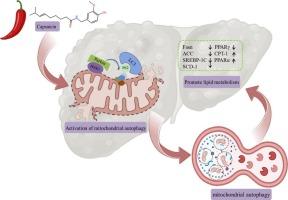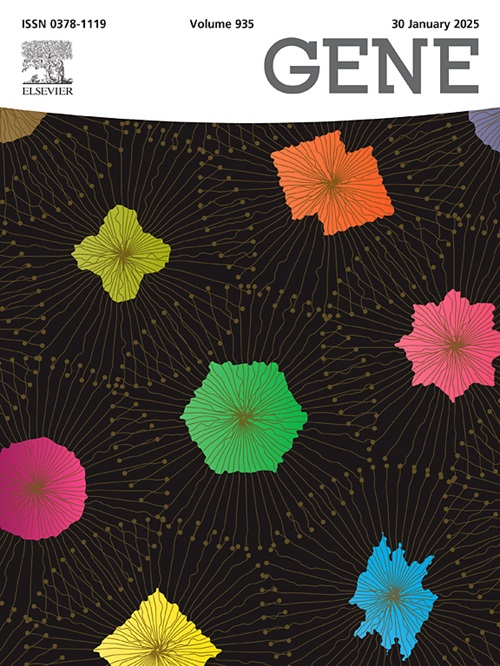Capsaicin regulated lipid metabolism in HepG2 via mitochondrial autophagy PINK1/Parkin pathway
IF 2.4
3区 生物学
Q2 GENETICS & HEREDITY
引用次数: 0
Abstract
Capsaicin (CAP), a major natural functional component in chili peppers, has garnered considerable attention for its health benefits, including lipid-lowering effects, and its precise mechanisms remain unclear. This study aims to investigate the lipid-reducing effects of CAP on oleic acid (OA)-induced lipid accumulation in HepG2 cells and explore the underlying mechanisms. The results showed that CAP exerted lipid-lowering effects by reducing triglycerides (TG), total cholesterol (TC), low-density lipoprotein cholesterol (LDL-C), and increasing high-density lipoprotein cholesterol (HDL-C) in OA-induced HepG2 cells. CAP modulated the relative expression levels of lipid metabolism-related genes, including ACC, PPAR-α, PPAR-γ, Fasn, CPT-1, SREBP-1C, and SCD-1 in HepG2 cells. Notably, CAP activated the PINK1/Parkin-mediated mitophagy pathway to alleviatie lipid accumulation. Treatment with the mitophagy inhibitor Mdivi-1 reversed the lipid-lowering effect of CAP, and silencing PINK1 gene using siRNA abolished lipid-lowering effect of CAP in HepG2 cells, confirming the critical involvement of the pathway. In conclusion, CAP targeted the PINK1 gene and activated the PINK1/Parkin signaling pathway to promote mitophagy, restoring cellular energy homeostasis and regulating lipid synthesis and degradation, ultimately reducing lipid accumulation. These findings provided a mechanistic basis for the potential use of CAP in developing novel natural therapies for lipid metabolic disorders and obesity management.

辣椒素通过线粒体自噬PINK1/Parkin途径调节HepG2的脂质代谢
辣椒素(Capsaicin, CAP)是辣椒中的一种主要天然功能成分,因其降脂作用等健康益处而受到广泛关注,但其确切机制尚不清楚。本研究旨在探讨CAP对油酸(OA)诱导的HepG2细胞脂质积累的降脂作用,并探讨其机制。结果表明,CAP通过降低oa诱导的HepG2细胞的甘油三酯(TG)、总胆固醇(TC)、低密度脂蛋白胆固醇(LDL-C)和升高高密度脂蛋白胆固醇(HDL-C)发挥降脂作用。CAP可调节HepG2细胞中脂质代谢相关基因ACC、PPAR-α、PPAR-γ、Fasn、CPT-1、SREBP-1C和SCD-1的相对表达水平。值得注意的是,CAP激活了PINK1/帕金森介导的线粒体自噬途径,以减轻脂质积累。使用线粒体自噬抑制剂Mdivi-1治疗可逆转CAP的降脂作用,使用siRNA沉默PINK1基因可消除HepG2细胞中CAP的降脂作用,证实了该途径的关键参与。综上所述,CAP靶向PINK1基因,激活PINK1/Parkin信号通路,促进线粒体自噬,恢复细胞能量稳态,调节脂质合成和降解,最终减少脂质积累。这些发现为CAP在开发脂质代谢紊乱和肥胖管理的新型自然疗法方面的潜在应用提供了机制基础。
本文章由计算机程序翻译,如有差异,请以英文原文为准。
求助全文
约1分钟内获得全文
求助全文
来源期刊

Gene
生物-遗传学
CiteScore
6.10
自引率
2.90%
发文量
718
审稿时长
42 days
期刊介绍:
Gene publishes papers that focus on the regulation, expression, function and evolution of genes in all biological contexts, including all prokaryotic and eukaryotic organisms, as well as viruses.
 求助内容:
求助内容: 应助结果提醒方式:
应助结果提醒方式:


